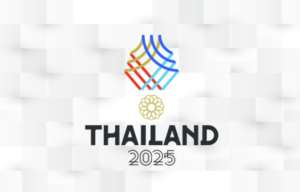Europe takes the lead in the global crypto market with MiCA regulation, as U.S. retail activity declines and Trump’s high-stakes crypto deals raise questions. Discover how EU clarity is beating American uncertainty.
Europe is quietly winning the global crypto war. With the implementation of the Markets in Crypto-Assets (MiCA) regulation at the start of 2025, the European Union has taken a commanding lead over the United States, despite President Donald Trump’s public endorsement of crypto.
As American retail activity slows and legal uncertainty drags on, Europe’s unified framework is unleashing a new wave of institutional and retail investment.
MiCA Triggers a Surge in EU Trading Volumes
According to Paybis co-founder Konstantins Vasilenko, trading volumes from European Union customers jumped an astonishing 70% quarter-over-quarter in Q1 2025, right after MiCA officially took effect on January 1.
This spike wasn’t about frequency, it was about volume. “The number of trades hardly moved,” Vasilenko said, suggesting larger and more deliberate investments from newly confident investors.
Meanwhile, crypto activity in the U.S. moved in the opposite direction. Platforms like Robinhood reported a 35% drop in crypto trading, and Coinbase saw retail participation shrink to just 18% of total spot trading volume, down from 40% in 2021.
“The timing is hard to ignore,” Vasilenko added.
What MiCA Gets Right: Clarity, Consistency, and Confidence
The MiCA framework introduces a single licensing regime across all 27 EU member states. Once licensed in one country, crypto firms can operate across the entire bloc, giving companies scalability and investors peace of mind.
Several major platforms have already secured MiCA licenses.
Beyond licensing, MiCA implements a series of investor protections modeled on Europe’s financial instruments directive (MiFID), including:
1. Clear disclosures
2. Cooling-off periods
3. Transparent fee structures
4. Full-reserve requirements for stablecoins
5. Independent audits and asset segregation
These policies have significantly reduced regulatory ambiguity and restored investor confidence in the EU crypto market.
France Leads, Germany Builds, Netherlands Connects
France has emerged as a clear standout within Europe, thanks to its early 2019 PACTE law, which laid the groundwork for MiCA. Paybis reported a 175% increase in crypto activity in France in Q1 2025.
Fintech hubs like Station F and the proactive approach by France’s financial regulator AMF are helping crypto adoption soar, with national crypto usage expected to reach 24% penetration this year.
Elsewhere:
1. Germany is building institutional infrastructure, with Deutsche Boerse’s Clearstream preparing to offer crypto settlement.
2. The Netherlands stands out for its robust payment systems and strong connectivity in the digital asset space.
As Vasilenko notes, “Liquidity pools in Frankfurt or Paris, customer support in Dublin, and compliance ops in Vilnius — all under the single MiCA umbrella.” The idea of a single “crypto hub” is becoming obsolete.
U.S. Falls Behind Despite Trump’s Rhetoric and High-Profile Crypto Ventures
While Europe builds, the U.S. dithers. Despite vocal support from Donald Trump and select members of Congress, the country still lacks cohesive federal crypto legislation. Regulatory uncertainty has paralyzed both investors and institutions.
As Vasilenko puts it: “State-by-state money-service licenses, unresolved SEC lawsuits, and sudden delistings mean ordinary users still can’t tell which coins, or even which staking products, will be available next month.”
Even Trump’s own crypto dealings appear mired in opacity.
Trump’s Crypto Empire: Bold Moves, Quiet Sales
Trump launched World Liberty Financial in September 2024, promising a “financial revolution.” The venture sold tokens with controversial terms, tokens couldn’t be resold, and 75% of proceeds after the first $30 million reportedly went to Trump and his family.
By early 2025, the Trumps and their partners had sold over $750 million worth of tokens. A new stablecoin, pegged to the U.S. dollar, attracted a $2 billion investment from a UAE firm. Yet behind the scenes, the Trumps began quietly divesting:
Their stake in World Liberty fell from 75% to 60% in January, then down to 40% by mid-June, according to subtle changes on the company’s website.
If World Liberty is valued similarly to Circle, whose stock tripled after going public, Trump’s divestments could have netted $135 million personally.
This aligns with Trump’s renewed focus on monetary policy. He recently attacked Fed Chair Jerome Powell, calling him a “moron” and a “numbskull,” and hinted he may fire him if interest rates don’t come down. His criticism comes amid a record $37 trillion U.S. debt load and rising interest payments.
Glimmers of Hope: The GENIUS Act and Stablecoin Reform
There may still be hope for the U.S. crypto scene. The GENIUS Act, now moving through Congress, could create a federal licensing regime and clear definitions for stablecoins, potentially echoing Europe’s MiCA.
If passed before the end of 2025, Vasilenko believes the law “would do for U.S. retail what MiCA just did for Europeans.”
Meanwhile, Circle’s successful public debut has reignited interest in crypto’s mainstream potential. The Senate recently passed a stablecoin regulatory bill, and markets are now eyeing Federal Reserve action in July, which could trigger a fresh Bitcoin rally.
Bitcoin Holds Strong Above $100K Amid Macro Uncertainty
Bitcoin has remained resilient, trading above $100,000, despite geopolitical risks and volatility. Analysts say its performance underscores its growing status as a safe-haven asset, similar to gold.
As Elliot Johnson of Bitcoin Treasury Corporation puts it, “Bitcoin’s recent strength… is a testament to its growing appeal as a long-term treasury asset.”
David Hernandez of 21Shares agrees: “Bitcoin’s fundamental properties—its scarcity, decentralization, and neutrality, make it an increasingly relevant asset for navigating an uncertain future.”
Conclusion: The Regulatory Divide Is Reshaping the Global Crypto Map
As Europe pushes forward with MiCA, and the U.S. grapples with internal divisions and politically charged ventures, the crypto balance of power is shifting.
While Trump’s brand may still move markets, it is Europe’s clarity, coordination, and consumer protections that are winning investor trust.
For now, Europe has the edge. But if Washington can unify around a framework like GENIUS, the race may soon become competitive again.
This press release has also been published on VRITIMES










